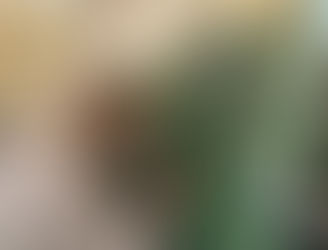Shaped by Hand, Fire and Imagination: Clay Practice across the Mahurangi Artist Network
- Karena de Pont

- Jul 18
- 4 min read
Clay has always had a certain magnetism — earthy, tactile, and elemental. It’s no surprise that so many members of the Mahurangi Artist Network are drawn to its possibilities. From sculptural vessels to playful figures, vibrant glazes to raw, pit-fired forms, clay connects these artists in shared material but vastly different practice. What they each create is a testament to the diversity and vitality of contemporary ceramics in our region.
For Cath Koa Dunsford, clay is a deep relationship with the earth itself. “Ceramic art is a moving, living, breathing interaction with our earth. It is kaitiakitanga,” she says. Working with locally dug clay, often pit-fired in her earth oven, Cath’s work is a poetic dialogue between tradition and experimentation. Her sea creatures emerge from a world shaped by ancestral caves and imagination, later named by their buyers. “I love the unpredictability — sometimes I mix oxides into the clay, sometimes I add glazes later. You never quite know how things will turn out, and that excites me.”
Brendan Adams, originally trained as a painter, is captivated by what clay allows him to do with colour and texture in three dimensions. “I want visitors to see the possibility of form, colour and texture that clay can achieve,” he explains. But he also acknowledges the challenges of sustaining a creative practice: “The ongoing nature of producing enough work to make a living can be daunting.”
Cherrie James embraces clay’s complexity. “Clay is a medium whose qualities I understand,” she says. A dedicated hand-builder, Cherrie relishes the chemical alchemy of glazing. “Some glazes turn out amazing, others not so — but opening the kiln to see the results is always exciting.” She formulates her own glazes and explores the full spectrum of firing methods, always learning, always testing.
Philippa Stichbury, raised in a pottery family, has been working with clay since she could walk. “I love the feel of it in my hands — it’s just always been there,” she says. Today she hand-builds most of her forms to allow for more expressive surface design and irregular shapes, though she sometimes integrates wheel-thrown elements into her work. “Clay is such a versatile medium — there are endless possibilities.”
For Blair Fraser, it’s all about colour. “The art isn’t just in the making — it’s in finishing the piece in a blaze of colour,” he says. Blair’s sculpture practice brings together tactile joy, bold design, and the anticipation of the kiln. “Glazing is an art form in itself… opening the kiln door is nerve-wracking but thrilling, especially when the result is perfection.”
Nature inspires many of these artists. Vivienne Paterson is deeply influenced by the natural environment, forming ceramic works that echo Aotearoa’s flora, fauna, and landscapes. “I hand-build to create the textures of nature,” she says. Vivienne recently began experimenting with copper elements — even learning to braise copper for use in her ceramic flax flowers. “After using a club kiln for 24 years, I’ve just bought my first kiln, and I’m excited to begin making my own glazes from raw materials.”
Caroline Bell, known for her animal sculptures, began her ceramic journey at the wheel but turned to hand-building after illness affected her wrists. “Now I mostly hand-build animals engaged in human activities,” she says, “and vessels with textural glazes.” Her storytelling through form invites a smile and a second look.
Juliana Austen, ever the gardener and hands-on maker, sees clay as an extension of that love for the natural world. “I’m not a real artist — I just like to play!” she says with a grin. “I hope people get a sense of organic patterns and forms from my work. Clay is like gardening: hands in the dirt to create.” She hand-builds her ceramics for the pleasure of working slowly, texturally, and intuitively.
Joy Zaloum balances function and form in her practice, working across both hand-building and wheel throwing. “Each method brings something unique,” she says. “Hand-building is sculptural and expressive; the wheel offers rhythm and precision.” What matters most to her is connection: “If someone feels that the piece has a story or energy to it — then I’ve done my job.” For Joy, the firing process remains magical: “The way heat transforms raw glaze into glass — that unpredictability keeps me coming back.”
Across their shared passion for clay, these artists shape stories, express ideas, and test the boundaries of form and surface. What unites them isn’t a single style or technique, but a devotion to this ancient, ever-evolving medium — one that challenges, surprises, and rewards in equal measure.
As we start to look forward to February 2026 and the next Mahurangi Artist Studio Trail, trail visitors will find that clay can speak in many voices — some bold, some quiet, all uniquely shaped by the hands that made them.
Below from Left: Brendan Adams is well-known for his hand-built ceramic sculptural forms -
These works are currently on display at Artform Gallery;
Popular Art Trail workshop tutor, Sandra Mather's latest hand-built works are on show at Estuary Arts Centre Members Merit Awards till 25 July;
Mike Reeves bowls reflect both simplicity and intricate detail, showcasing the patience and dedication poured into his work.








































































































Comments